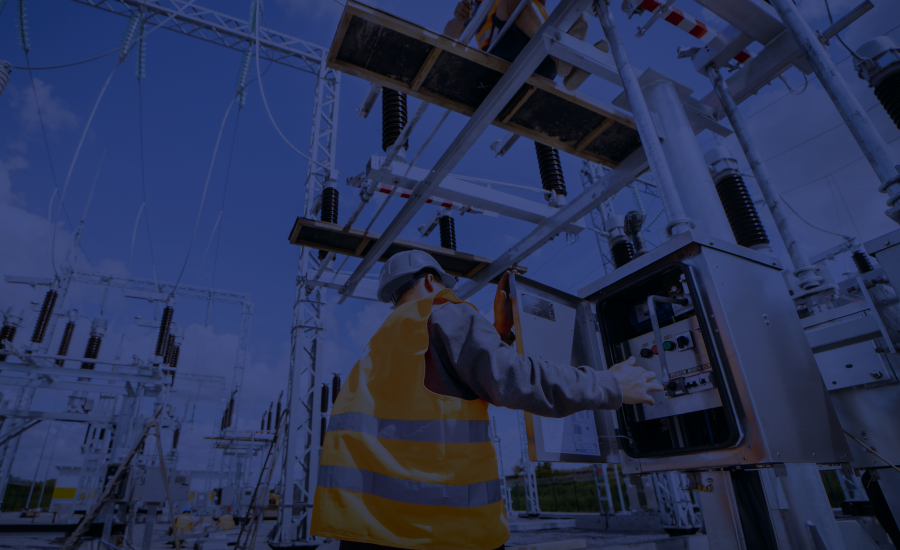In recent years it has been suggested that Digital Substations are part of the expected evolution for automation processes in the electrical sector. Its most important characteristic is the replacement of traditional copper cabling for optical fiber channels, which brings several benefits, mainly: cost and complexity reduction in the cabling logics, less time and size of implementation; ease in the integration of new device; greater speed of response to failures and more reliable information; moreover an increase in the safety conditions of the personnel on site. However, in order to access these benefits, it is necessary to go deeper into the concepts of data networks, communication protocols and cyber security. This article provides an overview of the challenges and opportunities arising from a Digital Substation and offers an introductory guide to its development.

Introduction
The definition of the IEC 61850 standard in 2001 laid the foundation for the transformation of electrical automation. This standard promotes a better use of communication technologies to make the communication processes required in a substation more efficient and reliable. Since then, there is a growing interest in taking advantage of the virtues of new technologies and marking an evolution in the field.
To better understand it, it is necessary to point out that in an electrical substation there are several services that must obtain the information from the primary device in order to offer protection, control and monitoring of the process. Under a traditional scheme, such information is transported through different voltage levels that travel through copper networks, which is a complex and expensive work, with hundreds of meters of cables and the same amount of possible points of failure. On the other hand, under the Digital Substation scheme, such information is transformed (as close as possible to the origin) into communication protocol packages that travel through hardened means such as optical fiber, facilitating the implementation of mechanisms that make data transport safer and more reliable.

En el esquema digital, los principales actores son equipos inteligentes que pueden comunicarse entre ellos. Para realizar las diferentes tareas en la subestación, dichos equipos utilizan diferentes protocolos estandarizados por la norma IEC 61850, por ejemplo: GOOSE, SAMPLED VALUES y MMS, entre otros. Estos protocolos brindan un mayor control sobre los datos y un procesamiento más rápido; evitando problemas como pérdida de información por atenuación del cable, o tener que adicionar más cables para un nuevo enclavamiento o uno ya existente que se podría realizar a través de un mensaje por protocolo.
Al reducir el cableado que llega de patio conectados a fuentes de tensión y corriente, t
In the digital scheme, the main actors are intelligent devices that can communicate with each other. To perform the different tasks in the substation, such devices use different protocols standardized by the IEC 61850 standard, for example: GOOSE, SAMPLED VALUES and MMS, among others. These protocols provide greater control over data and faster processing; avoiding problems such as loss of information due to cable attenuation, or having to add more cables for a new interlock or an existing one that could be done through one message per protocol.
By reducing the amount of wiring coming from outside connected to voltage and current sources, the electrical risk to people in the station, as well as to control and protection devices, is also reduced. It is estimated that the use of optical fibers reduces wiring by up to 80%, which means lower cost, size and implementation times.
By delegating much of the substation functionality to communications, it is possible to implement configuration verification through them. For example, to see how many data flows there are by protocol such as GOOSE or SAMPLED VALUES and depending on the MAC addresses verify the consistency of these; it can also be verified by IP by extracting its model by communication and contrasting the information with the SCL schemes that we have configured.
What are the main challenges in a digital substation?
One of the first challenges that a control and protection engineer faces in a Digital Substation is to understand the scheme of logical connections that occur within the network at any given time. When compared to the traditional substation, it is relatively easy to use an electrical plan to track the route of all the wiring that connects the signals between different sources and destinations. When we have everything digitized, we find a communication input from the devices to somewhere in the network. Then, communication plans have little use and really require a logical structure that allows us to understand the dynamics of the substation; the question is, where do we get the signals from? and what device needs those signals for communication?
At this point, edition 2 of the IEC 61850 standard presents some useful logical nodes to have documented communications, especially of the process bus; these are: the LGOS and LSVS, although not all manufacturers use it at this time, it is a tool that defines the standard.
On the other hand, there is a challenge of human capital management, since digital substations demand skills that go beyond the IEC 61850 standard, also requiring knowledge of network infrastructure, cyber security and other technologies. From this point of view, it is necessary to expand the field of knowledge of the personnel participating in a substation and thus change the way in which one works with electrical substations.
Why do we need GOOSE and SAMPLED VALUES?
In order to digitize the information of all the processes in the substation, it must be taken into account that the voltage and current signals of the instrument transformers, as well as the commands to operate the primary device, are very sensitive. An error or delay when transmitting this information can lead to network failures with losses in the millions and deterioration of service. To prevent such problems, the IEC 61850 standard has defined two special protocols: the first one is GOOSE (Generic Object Oriented Substation Events), defined in the IEC 61850-8-1 part and the second one is SAMPLED VALUES defined in the IEC 61850-9-2 and IEC 61850-9-2-LE parts (which seeks interoperability between manufacturers).
GOOSE allows the sending of digital states in operations such as interlocking of patio device and notification of trips; while SAMPLED VALUES allows the sending of analog signals from intelligent instrument transformers or device such as Mergin Units with the values of voltages and currents (the three phases plus the neutral).
The characteristics of these two protocols are:
- Structure with only one link layer and application of the OSI model, which the time to be processed is very small – around 2ms. Enough to clear a fault.
- They use the IEEE 802.1Q Vlan packet priority system, allowing these messages to be prioritized on the network over others that do not require as much availability
- They have procedures to verify if a message has been requested or has problems with synchronization in order to alert.
However, what happens when a switch or a fiber optic channel fails? We simply lose an important part of the substation, which is why the concept of redundancy is added, particularly through the PRP and HSR protocols defined in the IEC 62439-3:2016 standard where the packets always have two paths to arrive.
Redundancy is one of the vital issues that we find in this technology and monitoring that allows us to really see the state of these two networks is going to be very important. This implies having to verify that the device is well configured for these protocols, as well as that the information flows through both channels. Therefore, it is not about maintaining only one network, but two.
One of the shortcomings when working with the digital substation is not having a general configuration system and this point will not be easy to solve. Currently each manufacturer has its own configuration system of 61850, which not only generates datasets and reports, but also validates their device. It would be desirable to have general configuration tools that allow interoperation with different manufacturers. This would help to have all the stations with voltage levels, uniforms, notes, and even give support to LGOS and LSVS nodes, at least of only documentation, documented under a single SCL file.
Finally, it should be mentioned that the FAT and SAT testing processes change completely. If it is true that potential should be injected into PT’s, CT’s will only be an initial test that seeks to verify the linearity of these. In order to verify the different protections, it is necessary to test by communications without a voltage and current injection package, since the SAMPLED VALUES can be directly injected into the IEDs without disconnecting the CTs and PTs. This is supported by the simulation and testing modes proposed by the IEC 61850 standard.
Conclusions:
This article has discussed different benefits found in the digital substation, for example:
-
Cost reduction reflected in reduced cabling, shorter implementation time and smaller size.
-
Easy integration of new devices because the information they require can be sent by communications.
-
Faster response to a fault and more accurate information.
-
Greater security of the personnel on site because the information does not reach the device as voltages and currents but by means of communication protocols.
-
Reduction of complexity in the wiring logics that are replaced by communications.
However, accessing this also requires more staff training on issues such as communications networks and cyber security. Likewise, new devices such as the Mergen Unit, which brings the analog-digital transformation closer to the playground device. And whether we are ready or not, the transformation to digital substations is already underway.
Article written by: Alonso RojasRojas, Telecontrol Specialist AxonGroup




